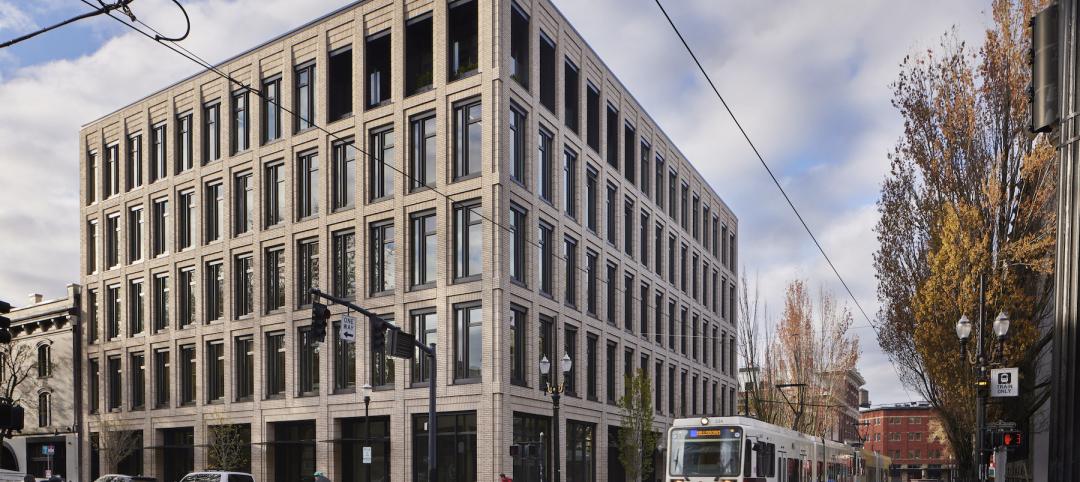Architects and engineers participating in the AIA’s 2030 Commitment are reporting the greatest reduction in predicted energy use (pEUI) in the program’s 10-year history.
“This year marks a critical inflection point for the program and climate action,” said 2020 AIA President Jane Frederick, FAIA. “This report outlines a vision for the coming years, which is anchored in community advocacy, adoption of on-site and off-site renewable energy sources, and increased attention to embodied carbon.”
The report—2030 by the Numbers: The 2019 Summary of the AIA 2030 Commitment—amalgamates predicted energy use data in buildings from 311 companies participating in the 2030 Commitment and analyzes design phase data from more than 20,300 projects. Architects, engineers, and building owners involved in the projects achieved a 49 percent overall pEUI reduction. The reduction is equivalent to avoiding 20.2 million metric tons of CO2 emissions. Other notable data included in the report:
- 241 whole building projects designed to be net-zero energy.
- 69 percent increase in firms meeting the 70 percent pEUI reduction since 2018.
- 27 large and small companies met 2030 Commitment targets.
As participants continue to improve reducing carbon emissions, AIA is upgrading its Design Data Exchange (DDx) platform to streamline the project reporting process and to improve user experience. The new platform will support optional data points—including embodied carbon and off-site renewables—that will deliver expanded insights into building performance.
AIA is also continuing its efforts to drive climate action in the built environment following its landmark initiative last year. Earlier this year, AIA released its Climate Action Plan and Architect’s Policy Platform, which outline AIA’s goals for carbon reduction and climate action policy initiatives respectively.
Complete details of the AIA 2030 Commitment program can be found on AIA’s website.
Related Stories
| Aug 23, 2022
New Mass. climate and energy law allows local bans on fossil fuel-powered appliances
A sweeping Massachusetts climate and energy bill recently signed into law by Republican governor Charlie Baker allows local bans on fossil fuel-powered appliances.
| Aug 8, 2022
Mass timber and net zero design for higher education and lab buildings
When sourced from sustainably managed forests, the use of wood as a replacement for concrete and steel on larger scale construction projects has myriad economic and environmental benefits that have been thoroughly outlined in everything from academic journals to the pages of Newsweek.
Sponsored | | Aug 4, 2022
Brighter vistas: Next-gen tools drive sustainability toward net zero line
New technologies, innovations, and tools are opening doors for building teams interested in better and more socially responsible design.
K-12 Schools | Aug 1, 2022
Achieving a net-zero K-12 facility is a team effort
Designing a net-zero energy building is always a challenge, but renovating an existing school and applying for grants to make the project happen is another challenge entirely.
Multifamily Housing | Jul 26, 2022
All-electric buildings – great! But where's all that energy going to be stored?
There's a call for all-electric buildings, but can we generate and store enough electricity to meet that need?
Green | Jul 26, 2022
Climate tech startup BlocPower looks to electrify, decarbonize the nation's buildings
The New York-based climate technology company electrifies and decarbonizes buildings—more than 1,200 of them so far.
Energy | Jul 13, 2022
Electrification of buildings, new and old, furthers environmental responsibility and equity
It’s almost a cliché in our industry, but nonetheless: The greenest building is the one that is already built.
Codes and Standards | Jul 12, 2022
USGBC sets out principles for LEED’s future
The U.S. Green Building Council recently published a report containing principles outlining how LEED will evolve.
Building Team | Jul 1, 2022
How to apply WELL for better design outcomes
The International WELL Building Institute (IWBI) cites attracting top talent, increasing productivity, and improving environmental, social or governance (ESG) performance as key outcomes of leveraging tools like their WELL Building Standard to develop healthier environments.
Green | Jun 22, 2022
World’s largest commercial Living Building opens in Portland, Ore.
The world’s largest commercial Living Building recently opened in Portland, Ore.

















